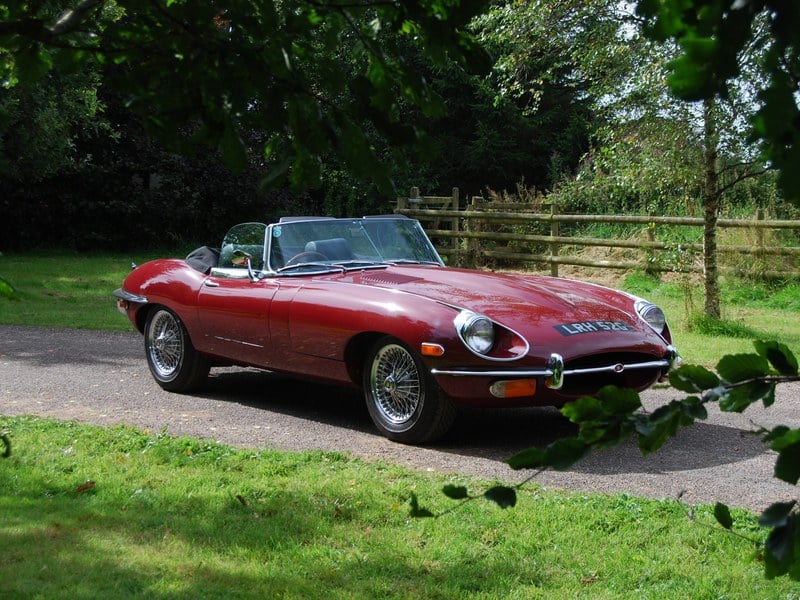Description
Following the sensational launch of the E-type at the 1961 Geneva Motor Show, Jaguar was almost constantly modifying its beautiful new sports car, and the biggest round of upgrades for the Series 1 came in 1964.
The fundamentals remained the same as they’d always been – a monocoque centre section with a subframe carrying the engine and front suspension. At the rear, independent suspension was fitted at a time when many of Jaguar’s rivals still employed a traditional live axle, and disc brakes were used all round.
The engine was still the twin-overhead-camshaft XK unit, but increasing the bore from 87mm to 92mm gave an overall capacity of 4. 2 litres rather than the previous 3. 8 litres. Power was unchanged at a claimed 265bhp, but there was a boost in torque to 283lb ft.
A more powerful brake servo was fitted, new bucket seats replaced the much-criticised originals, and an alternator replaced the dynamo. Jaguar’s own all-synchromesh four-speed gearbox replaced the elderly Moss unit and was universally praised as being a considerable improvement.
One thing that didn’t change was the E-type’s timelessly elegant shape, and this updated model continued to be known as the Series 1. Not until 1968 did the considerably facelifted Series 2 arrive, following a short run of cars that combined elements of both Series 1 and Series 2, and which have retrospectively become known as the ‘Series 1. 5’The 4. 2 Series 1 was offered as both a Roadster and a Fixed-Head Coupé, and a long-wheelbase 2+2 model was added to the range in 1966. When The Motor tested a 4. 2 Roadster in October 1964, it said that: ‘At £2000 it creates its own unique position among the world’s most desirable cars with a combination of performance, handling, looks and refinement that … is still unequalled at this price.’
The E-type being offered for sale here is a ‘Series 1. 5’ that was built at the Browns Lane factory on 17 October 1967 and dispatched five days later to Jaguar Cars New York. Chassis number 1E16079 remained in the US until it was imported back into the UK from Alabama in late 1989.
It was then restored, converted to right-hand-drive and first registered in the UK in 1991. Having been acquired by its current owner in 2006, the car was enjoyed as a true British classic before a decision was made to take part in a first classic car rally, nothing less than the 2009 Nile Trial which assembled in Marseille before taking the many participants across the mediterranean overnight then starting in Tunis then onto Libya before a final section taking in Luxor and the Pyramids with the wonders of Egypt.
Since then, the car has been on a number of other events and brought back to being a true British classic for pure driving engagement and entertainment.
Inside, TRS harnesses have been fitted and there’s a Brantz tripmeter installed, plus a handheld extinguisher and that all important safe is fitted for keeping things secure. A lovely touch is that there are two bespoke suitcases in the boot, ready for its next rally adventure.
Considerable expenditure in more recent years has included the installation of new glass and seals in 2018, plus the removal of the rear subframe the following year so that it could be stripped and repainted. The diff was also rebuilt at the same time, and a new propshaft fitted.
A quick and stylish choice of a true British historic-rally car, this highly eligible Jaguar E-type is ‘ready to go’ on many classic car events on offer from Rally the Globe, Regularity or Bespoke Rallies or Hero.
This lovely Jaguar comes with an extensive history file that is packed full of receipts and invoices.
The car is currently residing with Rally Preparation Services sister Company, RPS Storage Ltd and available for inspection.
All viewings and test drives welcomed through direct contact with Rally Preparation Services.
All email enquiries please contact us on using the button below or telephone +44(0)the details below
Images subject to copyright – Rally Preparation Services Ltd






















